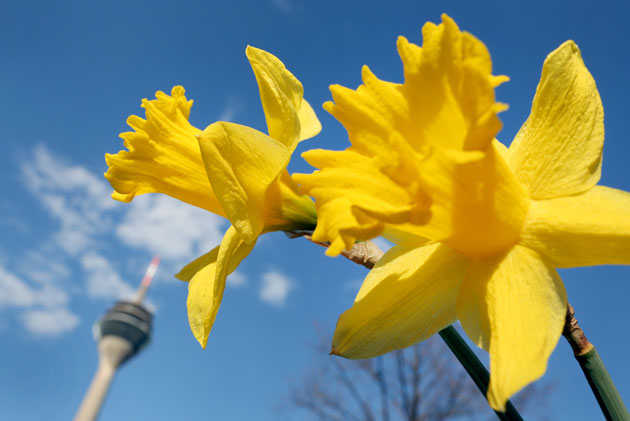A Visit To The Biergarten!
/Thanks to the fact that Stuttgart is having an unseasonably warm Spring, my very favorite place in the entire city is up and running earlier than expected! That's right, I'm talking about the Biergarten am Schlossgarten, the most traditional Biergarten in the city proper.
A biergarten in Munich
What do I love so much about the Biergarten? It's not the food, which is serviceable but nothing to write home about. The fact that they have my favorite beverage, Swabischer Bauernmost* on the menu certainly helps. But at the end of the day it's because I've been infected with the European mania for sitting outside once the thermometer rises above 55 degrees Fahrenheit.
But a biergarten isn't just any old place to sit outside. The roots of the biergarten tradition goes back hundreds of years. They originated in the Bavarian capital of Munich. Beer needed to be stored somewhere cool during the warm summer months, so brewers dug beer cellars on the banks of the Isar River, relying on the cold Alpine runoff to chill the beer and keep it from spoiling. They spread the grounds above the cellars with gravel and planted chestnut trees to further cool the cellars with their shade. It was convenient to serve the beer where it was stored, and the biergarten was born.
You are most likely to find a traditional biergarten in Bavaria, but they exist all over Germany, and there are several in Stuttgart. To be traditional, a biergarten must have gravel on the ground, benches for seating, and chestnut trees for shade. There is no table service, you order your beer from the counter. Biergartens serve simple regional and Bavarian food, but you are allowed to bring your own food to many, as that is also part of the tradition.
Yours truly enjoying the public viewing of the EUFA Championships in 2012
As for the Biergarten am Schlossgarten, it had a formerly lovely setting, very close to the main train station, but surrounded by park and trees on all sides. Sadly, the Stuttgart 21 train station construction has besmirched one edge of park, but it's still a pleasant place to relax after a hard day at work, or listen to live music at lunchtime on a Sunday. And it's a great place to cheer on Germany during this summer's World Cup!
Starting tomorrow, Thursday March 20th, all tours will end with an optional stop at the Biergarten am Schlossgarten where I'll be happy to explain more about the local food and beer you can obtain there! Prost!
*Swabischer Bauernmost means "Swabian Farmer's Juice" but it's actually a kind of apple cider. It's hard to find, so come with me to try some!







